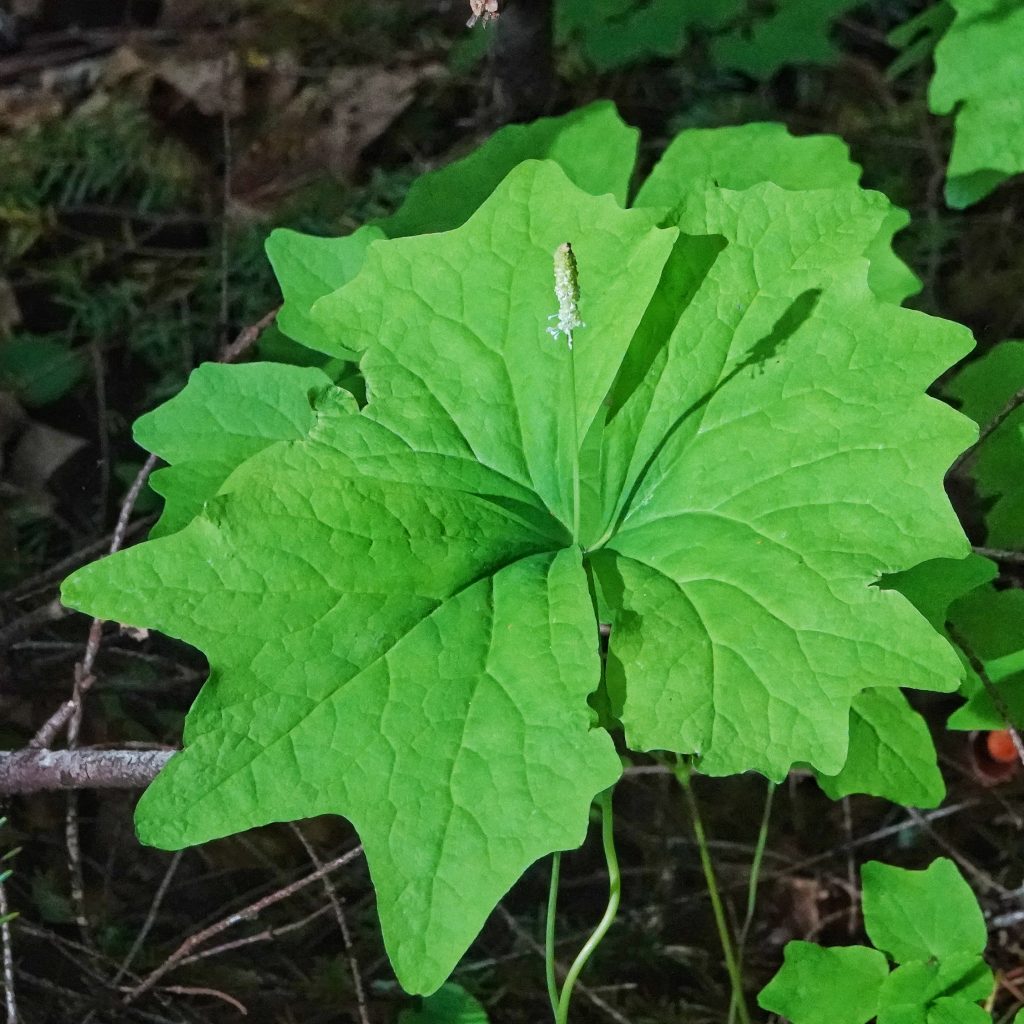
After 4 straight animal posts (3 of them vertebrates), I thought I’d turn to the botanical world for this profile. This plant goes by a variety of common names, including Deerfoot, Achlys, Sweet After Death, Deervetch Vanillaleaf, but I’ve always called it Vanilla Leaf. It is a handsome, if understated, plant, and I’m particularly fond of the texture its bluntly toothed, triune leaflets bring to the forest floor. It seems there are two types for this member of Berberidaceae, a diploid form that grows in well drained upland areas, and a tetraploid form that grows in deep shade in moist low elevation forests.
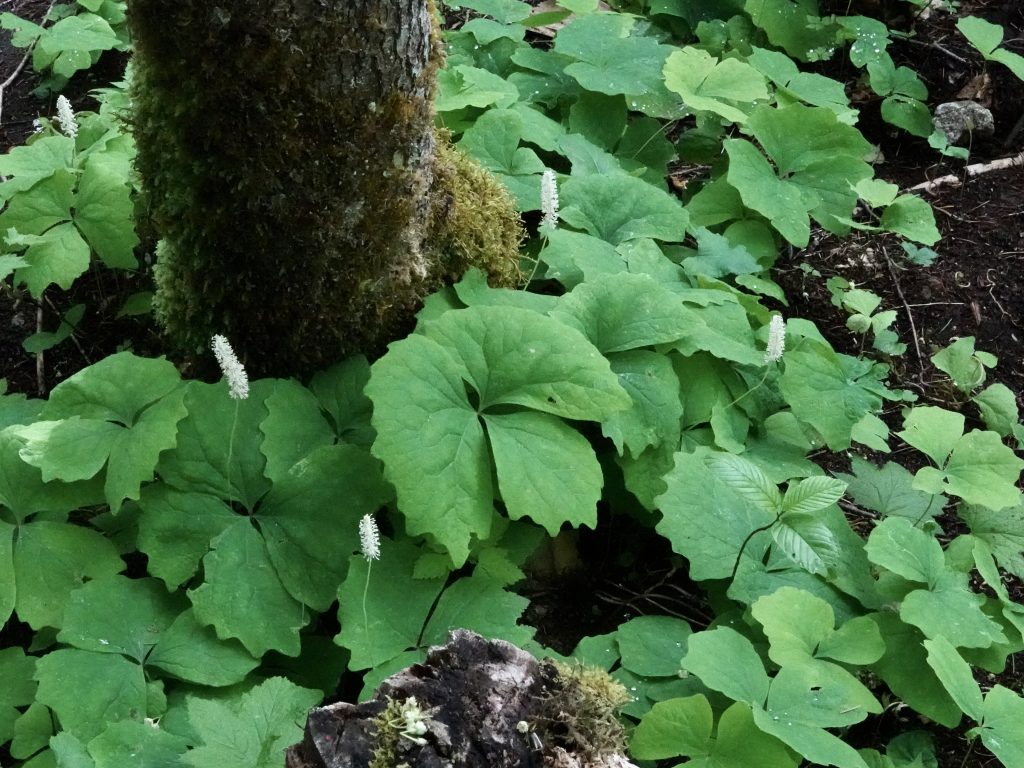
I can find no references to indigenous cultures eating these plants, but they did use it to treat tuberculosis, cataracts, and as an emetic. They also utilized its insecticidal and insect repelling properties as a hair wash, delousing agent for sheep, and cleaning solution for bedding and furniture infested with vermin, and they hung bundles of dried leaves in their dwellings to discourage flies and mosquitoes.
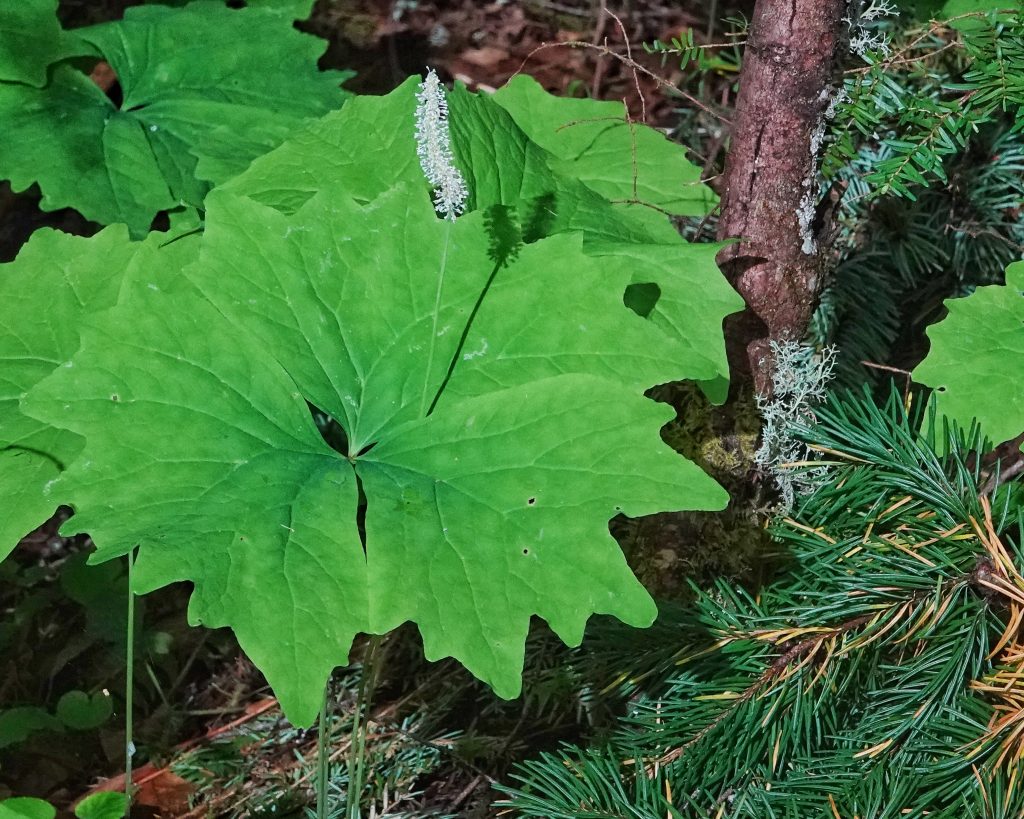
Description-Fairly low growing (seldom more than 15” tall) plant with a single leaf divided into 3 dull green leaflets that are roughly, asymmetrically triangular, and have rounded to blunt teeth at the apex; scape arises near the base of the stem, but usually appears to come from the junction of the leaflets, and the inflorescence is a narrow, 2-3” long column of tiny white flowers on long, clear to white peduncles.
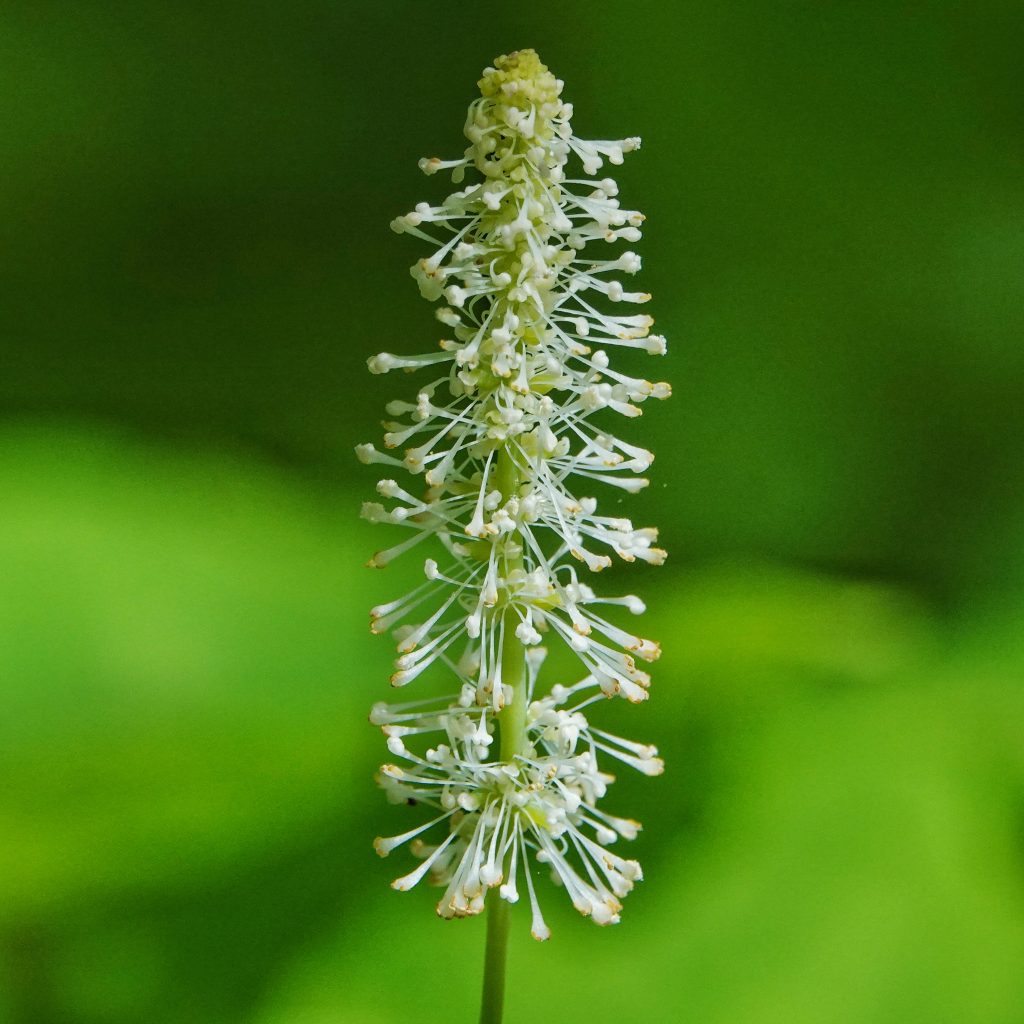
Similar species-The leaves are quite distinctive, but without a clear view of the leaves the flower could be mistaken for Maianthemum dilatatum, which has a single, heart shaped leaf; Achlys californica has 8-9 leaflets, though many botanists consider it to be a subspecies, or even just a variation, of A. triphylla.
Habitat-Well shaded, moist to mesic conifer and mixed forests, up to 5,000’ elevation.
Range-West Coast North America; in our region it is found from the east slope of the Cascades to the Pacific.
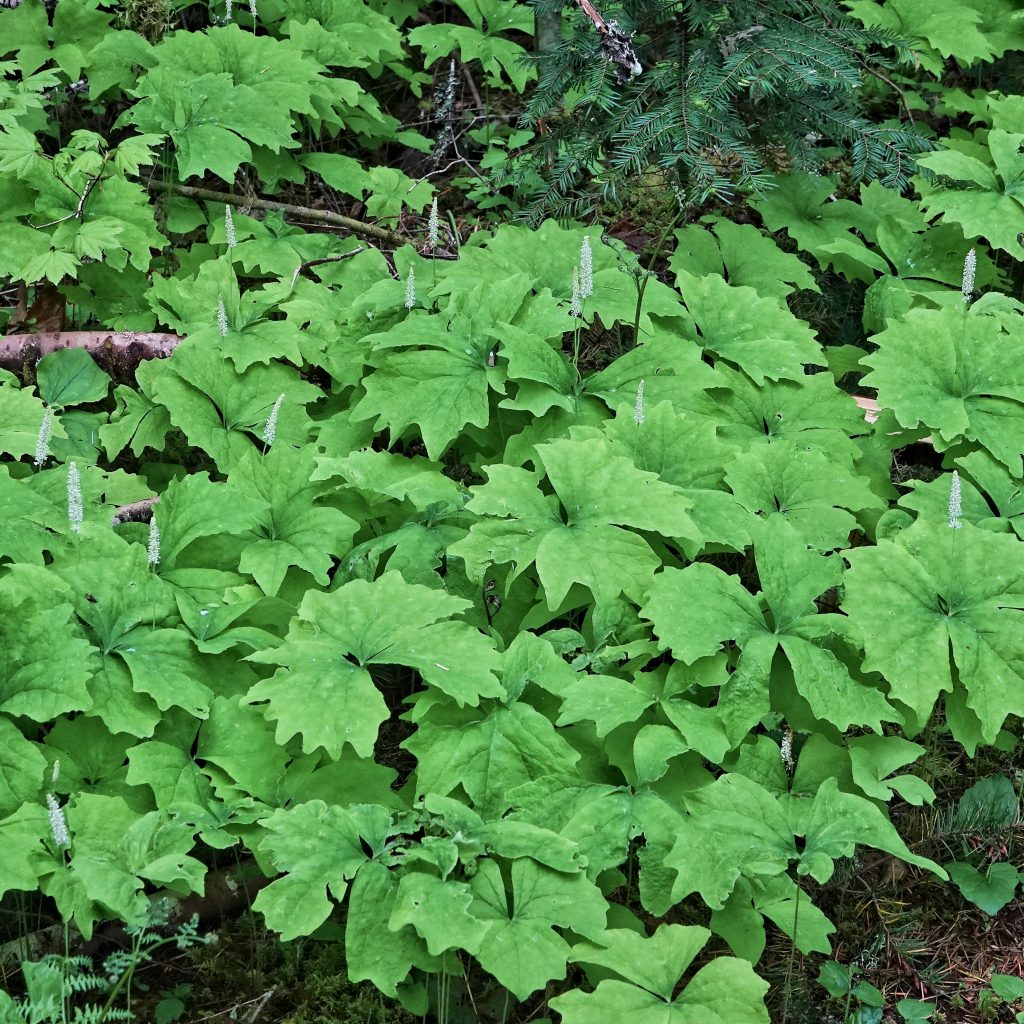
Reproductive timing-Blooms April to July, depending on elevation.
Eaten by– The larvae of Walshia miscecolorella seem to be one of the few invertebrates to consume this plant, which is not surprising since many cultures value it for its insect repelling properties; it is considered by gardeners to be deer and rabbit resistant.
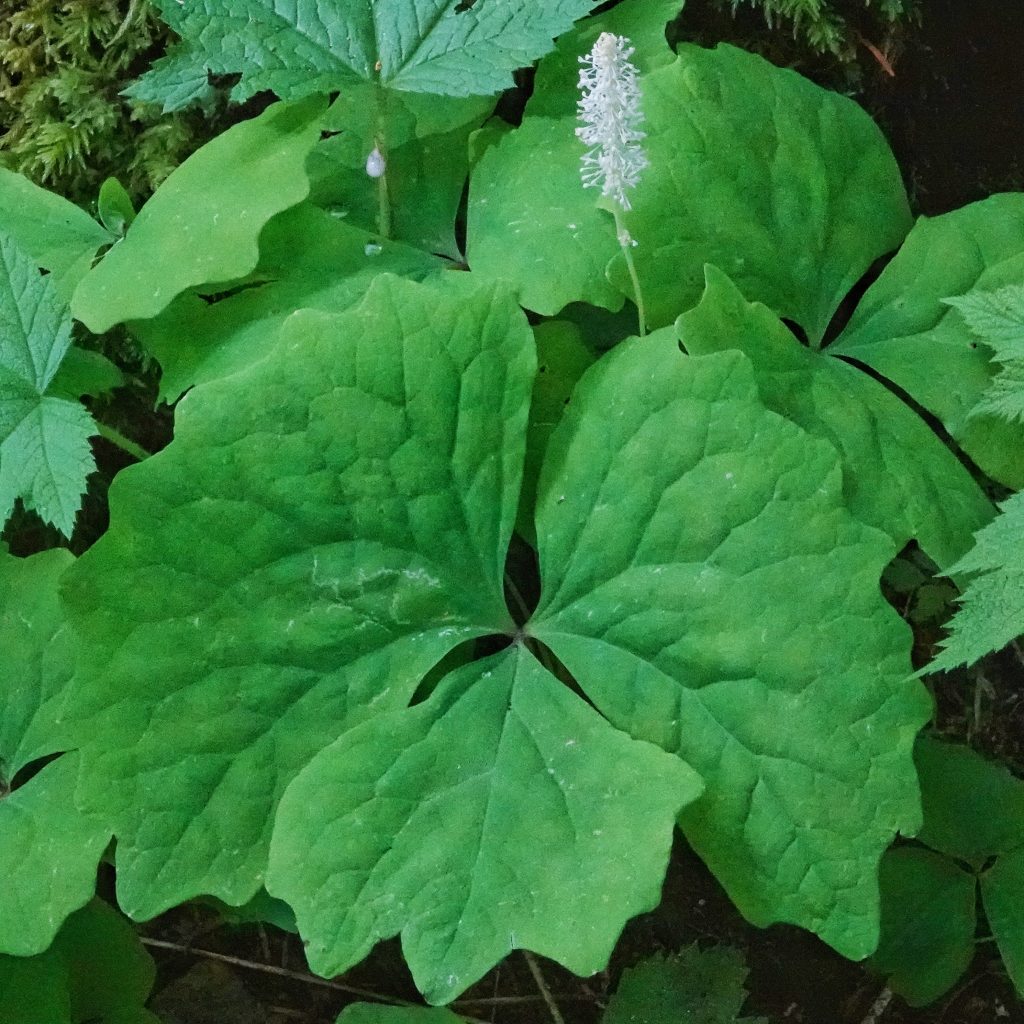
Etymology of names–Achlys is from the Greek goddess of sorrow, mist, and eternal night, who was depicted on Heracles shield, and probably refers to the preference of this plant for deep shade, but may also reference the fact that the odor of the leaves of this plant is sweeter after they ‘die’ and start to dry out. The specific epithet triphylla refers to the three leafleted leaf.
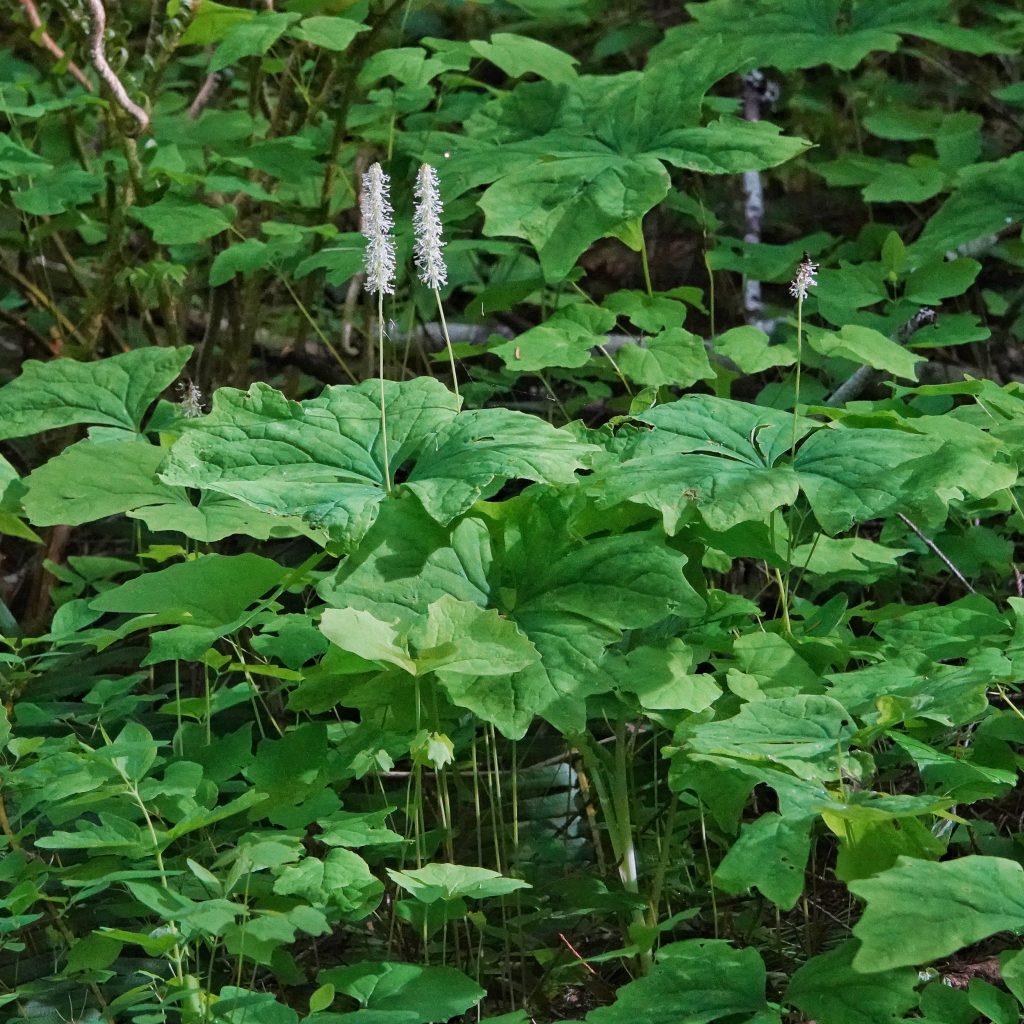
https://linnet.geog.ubc.ca/Atlas/Atlas.aspx?sciname=Achlys%20triphylla&noTransfer=0
https://eflora.neocities.org/Achlys%20triphylla.html
https://www.wnps.org/native-plant-directory/10-achlys-triphylla
Achlys triphylla | Vanilla Leaf | Wildflowers of the Pacific
https://pfaf.org/USER/Plant.aspx?LatinName=Achlys+triphylla
https://biology.burke.washington.edu/herbarium/imagecollection/taxon.php?Taxon=Achlys%20triphylla
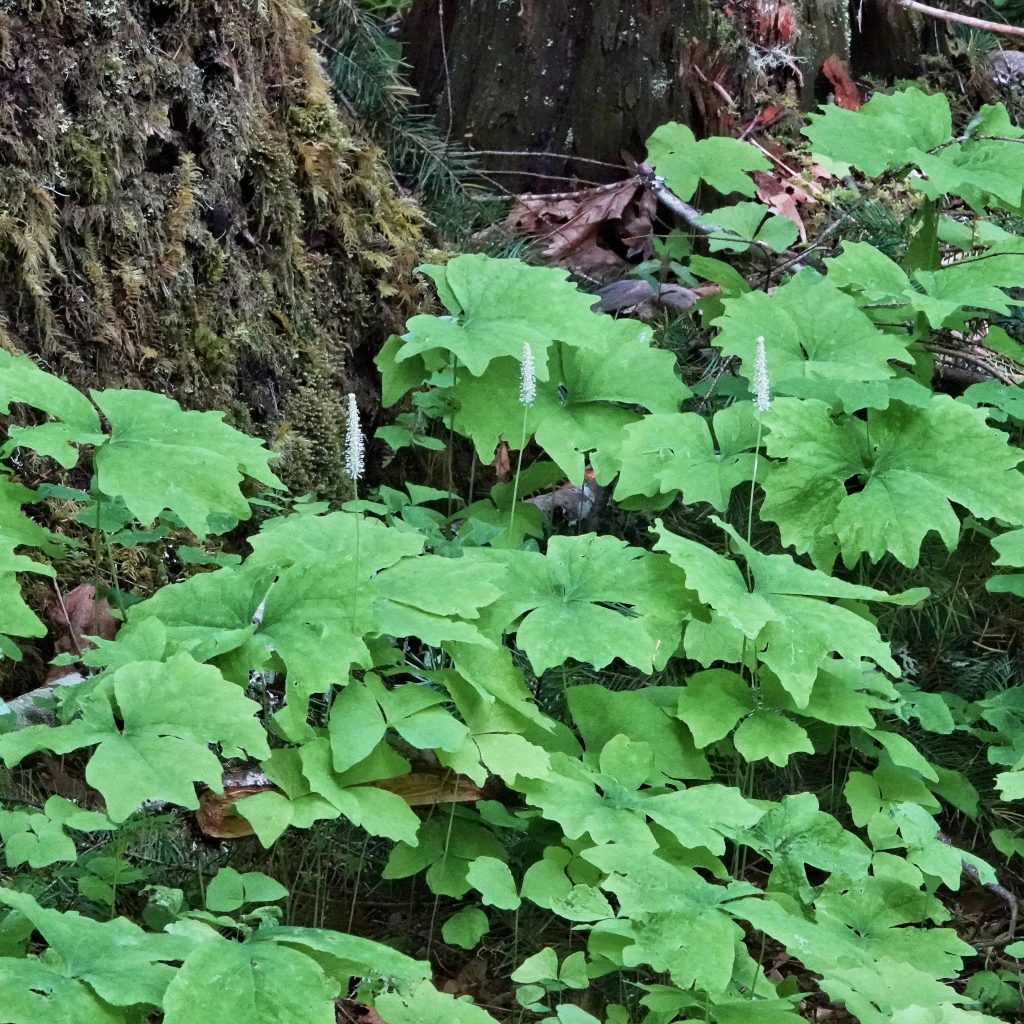
Somehow especially calming this morning to read the descriptives..
Glad to hear it!
Sorry, I couldn’t find better place to leave a minor correction – the Berberidaceae family name in your gallery needs an extra E at the end.
It’s correctly spelled amongst all the galleries together, but once you click on it and it shows Achlys and Vancouveria…that one.
Fixed that. Thanks, Jerry!
I am having so much fun reading your website – but now it’s time for me to go out and see it all in person!
Enjoy yourself, Jerry! It’s a lovely day!